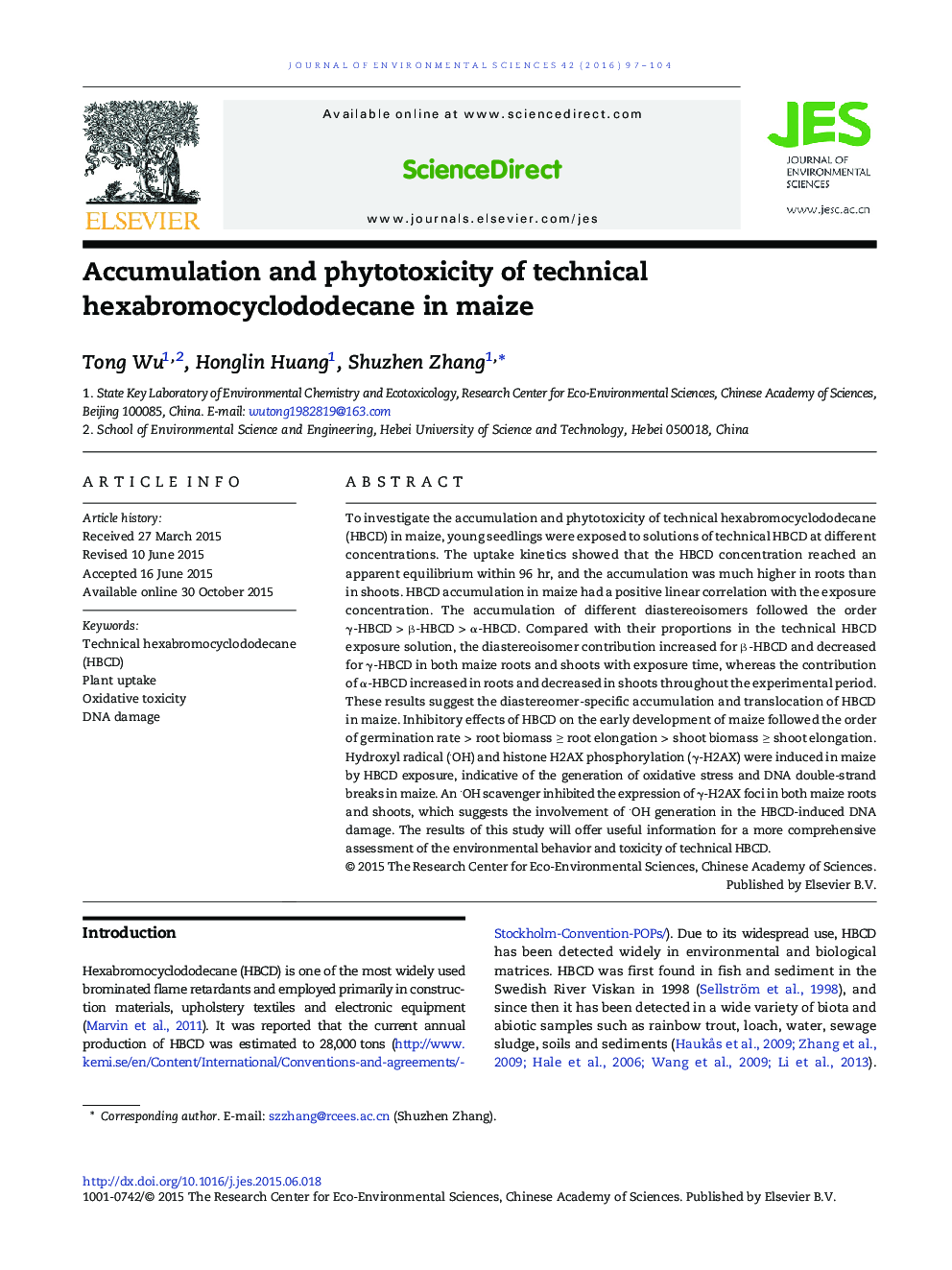| Article ID | Journal | Published Year | Pages | File Type |
|---|---|---|---|---|
| 4453794 | Journal of Environmental Sciences | 2016 | 8 Pages |
To investigate the accumulation and phytotoxicity of technical hexabromocyclododecane (HBCD) in maize, young seedlings were exposed to solutions of technical HBCD at different concentrations. The uptake kinetics showed that the HBCD concentration reached an apparent equilibrium within 96 hr, and the accumulation was much higher in roots than in shoots. HBCD accumulation in maize had a positive linear correlation with the exposure concentration. The accumulation of different diastereoisomers followed the order γ-HBCD > β-HBCD > α-HBCD. Compared with their proportions in the technical HBCD exposure solution, the diastereoisomer contribution increased for β-HBCD and decreased for γ-HBCD in both maize roots and shoots with exposure time, whereas the contribution of α-HBCD increased in roots and decreased in shoots throughout the experimental period. These results suggest the diastereomer-specific accumulation and translocation of HBCD in maize. Inhibitory effects of HBCD on the early development of maize followed the order of germination rate > root biomass ≥ root elongation > shoot biomass ≥ shoot elongation. Hydroxyl radical (OH) and histone H2AX phosphorylation (γ-H2AX) were induced in maize by HBCD exposure, indicative of the generation of oxidative stress and DNA double-strand breaks in maize. An OH scavenger inhibited the expression of γ-H2AX foci in both maize roots and shoots, which suggests the involvement of OH generation in the HBCD-induced DNA damage. The results of this study will offer useful information for a more comprehensive assessment of the environmental behavior and toxicity of technical HBCD.
Graphical abstractThe uptake and translocation of HBCD in maize are diastereomer-selective and HBCD accumulation results in the generation of oxidative stress and damage of DNA double-strand breaks in maize.Figure optionsDownload full-size imageDownload as PowerPoint slide
